There is a certain macabre romance that one feels when entering the Cherokee National Prison Museum. The museum is located in the heart of the Cherokee capital of Tahlequah and has stood there since 1875, continuing to function for the Indian Territory until 1898.
The Prison
The building has taken on an air of friendliness, a fabricated mist, if you will, that attempts to buffer the misery of generations. The cells themselves reflect the often primal nature of mankind. These rebuilds are surrounded by photographed faces absent of joy, hanging from cold sandstone walls, which, for some, was their final home.
One can only assume that the sound of the trap door being activated managed to filter through the barred windows from the gallows which sat just a few feet away. And yet, this gallows was not the first choice for a law that was forced to contend with the brutality of its time. This prison was not built for the sole purpose of punishment; indeed, these walls held within them a chance for rehabilitation, a labor-driven school, of sorts.
Sections of the property included a blacksmith as well as a garden. These were, after all, hard times for people who had recently been forced out of their own homes, supplanted and abandoned. Overwhelming anger flourished, and with it came hopelessness. All of this had been taken into account when the prison was built. This compassion for their people was quite apparent when rendering judgment.
Still, some crimes went beyond leniency. One such case confronts you as you climb the stairs to the second floor. It is just beyond the single cell for women that you will find the brothers Fred and George Dunaway. Two convicted murderers were sentenced to die for the killing of their cousin and local legend: Washington Jess Lee, a survivor of The Trail Of Tears who became one of the first Light Horse Lawmen. This story illustrates just how quickly things can escalate. Fred was in love and had married a girl named Lizzie. Lizzie and her new step-cousin’s wife became engaged in an altercation, and by the altercation, it seems to have been a knock-down fight.
Washington Lee stepped in and physically broke up the two women. Lizzie rushed home claiming that Washinton had struck her and demanded that her husband, Fred, avenge her, and if not, she would leave him. This, of course, left Fred with only one option. He confronted Washington, and soon a battle ensued which, according to records, left Fred rather bruised and defeated.
Luckily George was close by and managed to pull his brother away. But this family squabble was far from over, and soon the brothers devised a plan. A few days later, they hid away in a line of tall grass as Washington led his horse over to a nearby pasture. It was then that they made their move. At first, the plan was to pulverize the man, but Washington, armed with a rock, began to get the better of the two boys, so they drew their guns and opened fire. On the plus side, Fred managed to remain married until death did they depart.
These young brothers sit forever pictured in black and white wearing the best suits that their conflicted family could provide; their photograph was taken just minutes before they were executed. They died like they killed; together.
Family disputes, much like now, were quite common in those early days. Ball Christie was convicted of murdering his uncle George Dick and was sentenced to hang, but the day before his sentence was to be carried out was sent home due to his losing battle with tuberculosis. He died while en route.
Odd as it seems, this prison was once reportedly visited by Frank and Jesse James, although not as unfortunate residents. During this time, Oklahoma was Indian Territory, and it served as a haven for notorious outlaws. Many would come and walk freely through the streets of Tahlequah, knowing that there was no Federal jurisdiction. The James brothers, so the story goes, had arrived and were then welcomed by the acting sheriff who doubled as the warden. They were then given a tour of the prison. A deputy, after being told that they were in town, grabbed his gun and went to find them. He rushed into the prison, his gun held in his hand.
“We ain’t here to rob you,” said Jesse.
“I know,” said the deputy. He then proceeded to follow them where ever they went. These are just a few of the interesting stories that you will find when visiting the museum.
The original sandstone structure was three stories, with the top story housing the warden/sheriff and his family. They lived directly above the prisoners. Even more interesting is that no stairs connected the lower levels to the third story. The warden and his family used a ladder that led to a window that was then removed daily, providing them with a bizarre sense of security. Unfortunately, the third floor was lost in a fire and was not replaced.
For over thirty-five years, this testament to a struggling people was able to survive, only to be decommissioned with the Curtis Act of 1898. But if you happened to be a prisoner during the transition, you would have certainly thought that it was time to hit the card table. All remaining prisoners not being held for murder were pardoned and free to go. The prison wasn’t completely retired and served as a county jail until the 1970s, when it was then placed on the National Register of Historic Places in 1974.
This museum offers a real-time walk into the past. It includes prehistoric shackles and whipping posts, an authentic black and white striped prison outfit complimented by a mannequin holding a hoe, indicative of the labor that was expected. An authentic, rustic stove still sits within one section of the museum, cast iron skillets resting on top.
The museum is inundated with information that is both appealing and thought-provoking, not to mention horrific warnings about breaking the law or at least getting caught. One trip upstairs to where the packed prisoners were forced to serve their time is stifling, saying the least. And to then be able to gaze out of a barred covered window at the replicated gallows below is enough to produce a chill.
And yet, this structure was built out of necessity. A six-thousand dollar venture was created, not because they wanted it, but because they had to have it. But in the end, like so many other things, it was stripped away. Along with the loss of the prison, the Curtis Act took back ninety- million acres of promised tribal land, creating even more friction in an already volatile situation. To walk within these prison walls is to face the harshness of our past. Surrounded by humorous slants on tragedy and replicants of sorrow, some justified, some not so much. It produces a train of thought that leads to empathy and hope for better days to come. And the wait continues.

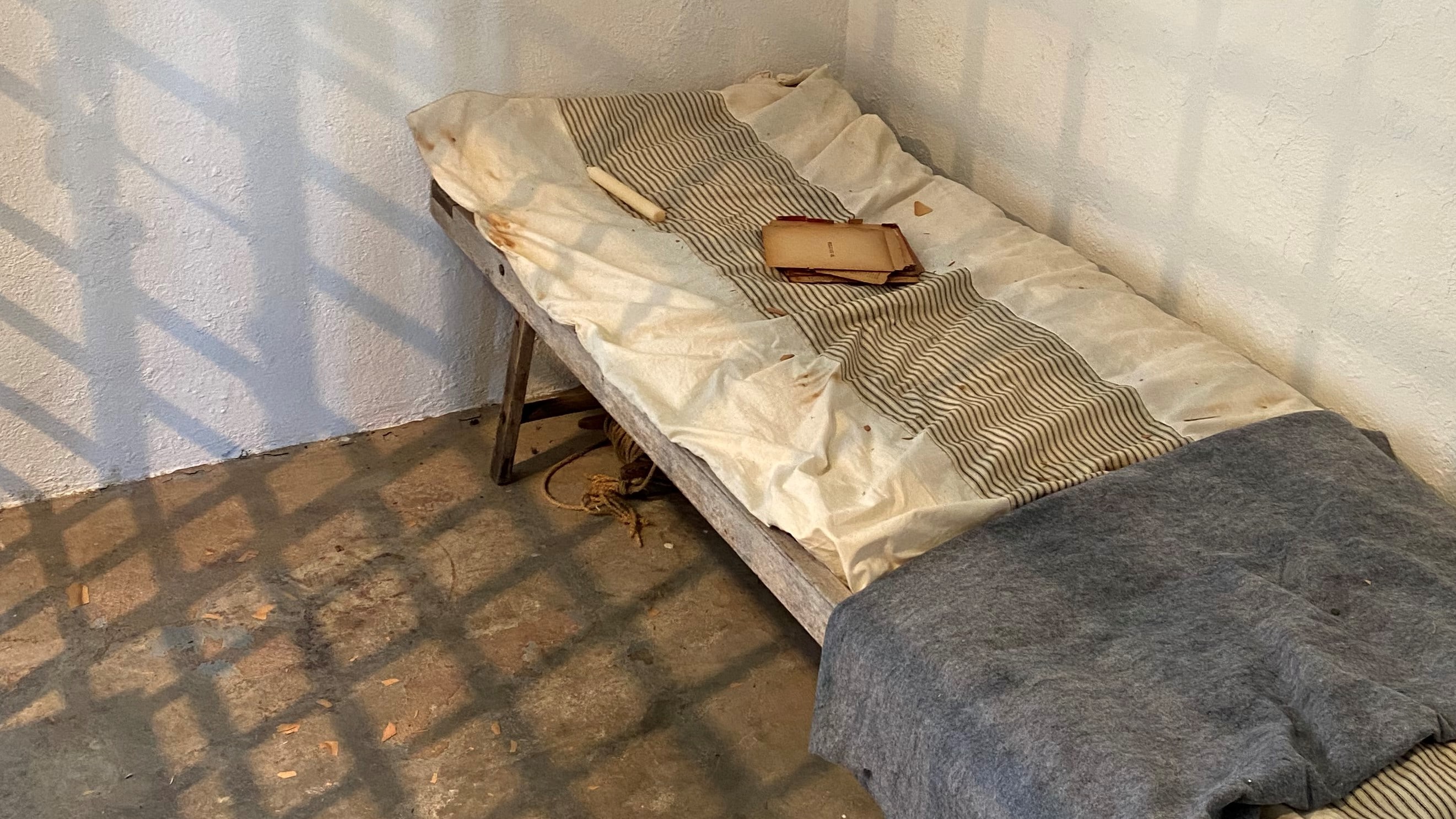
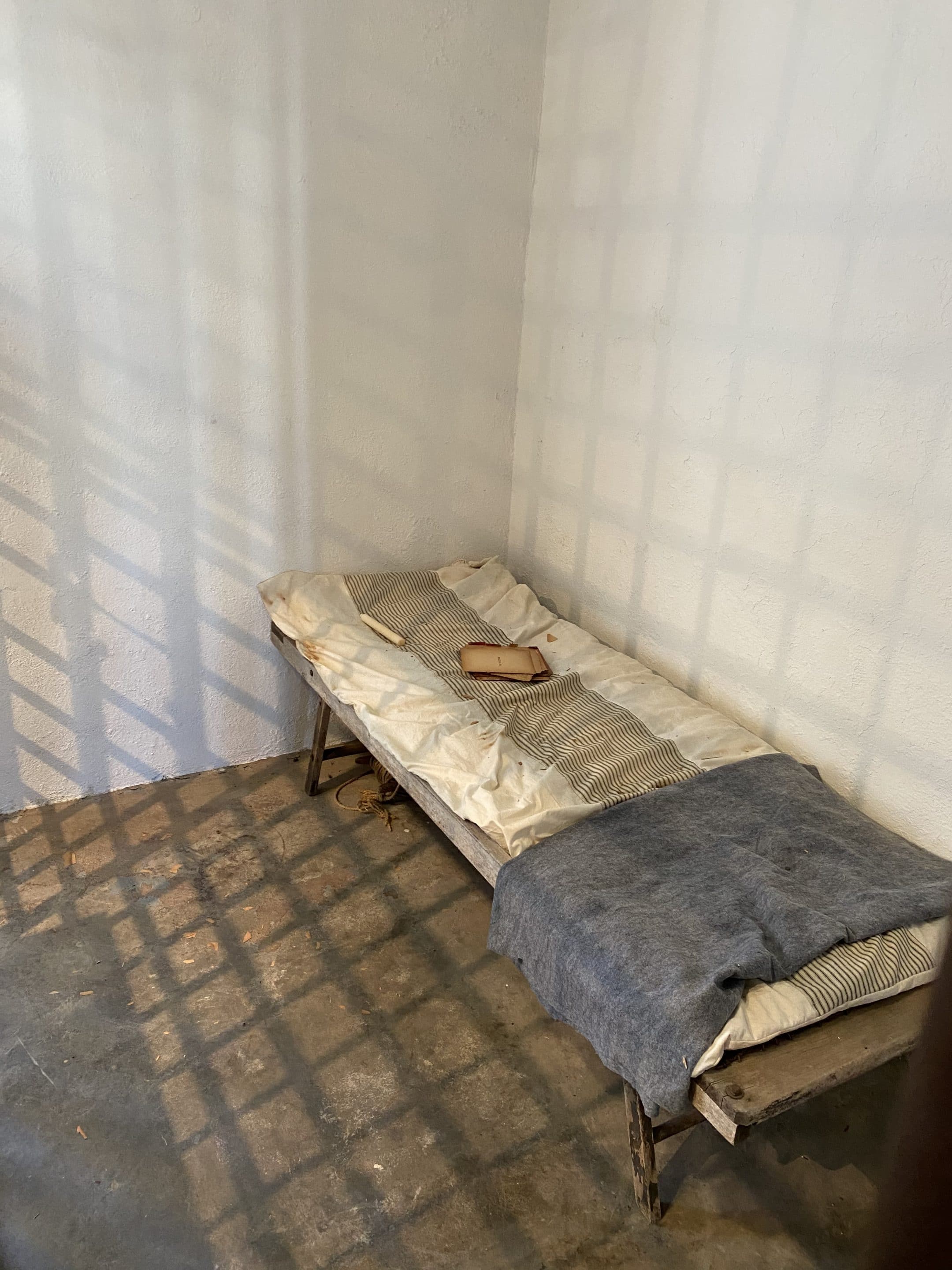
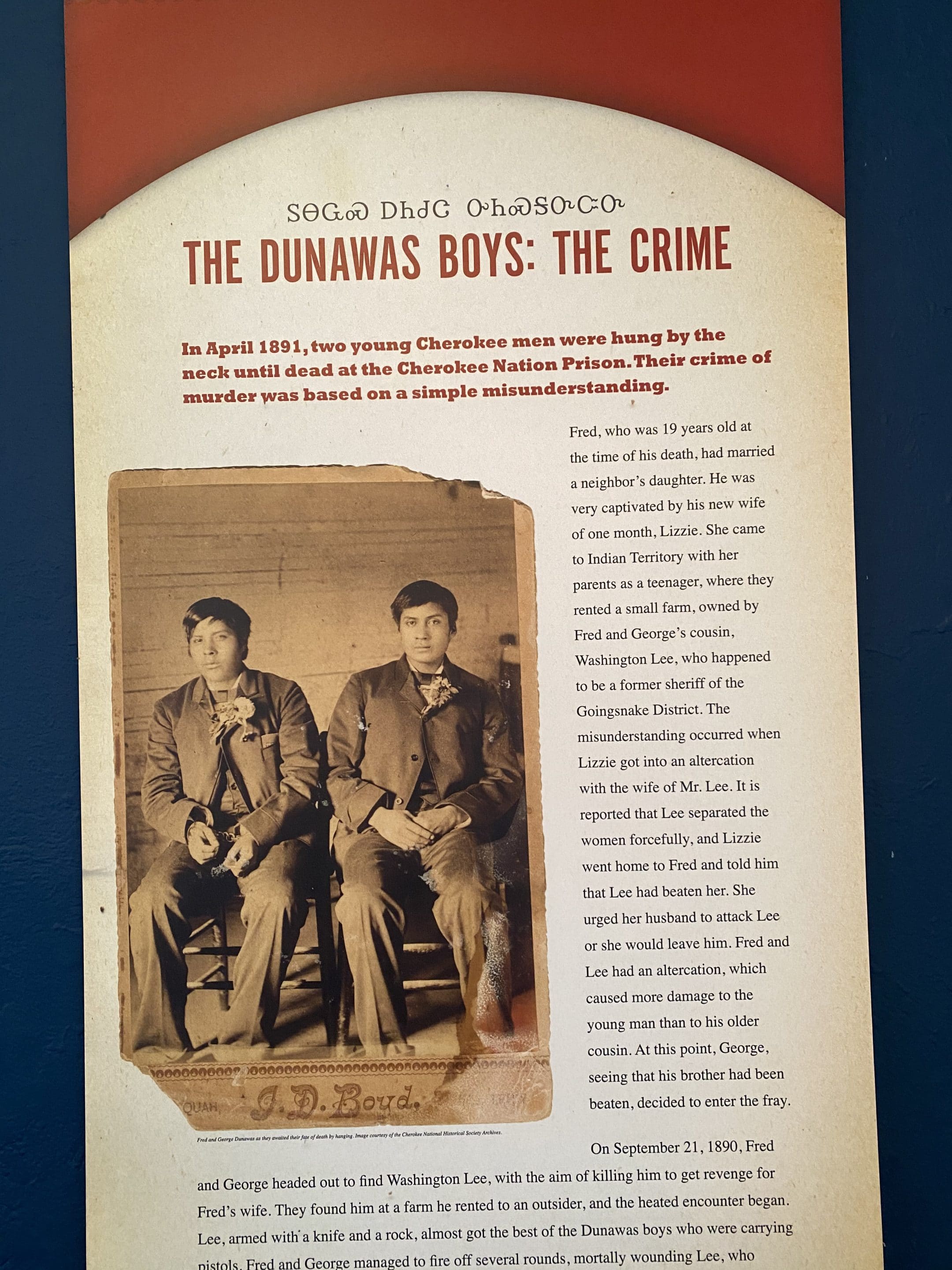
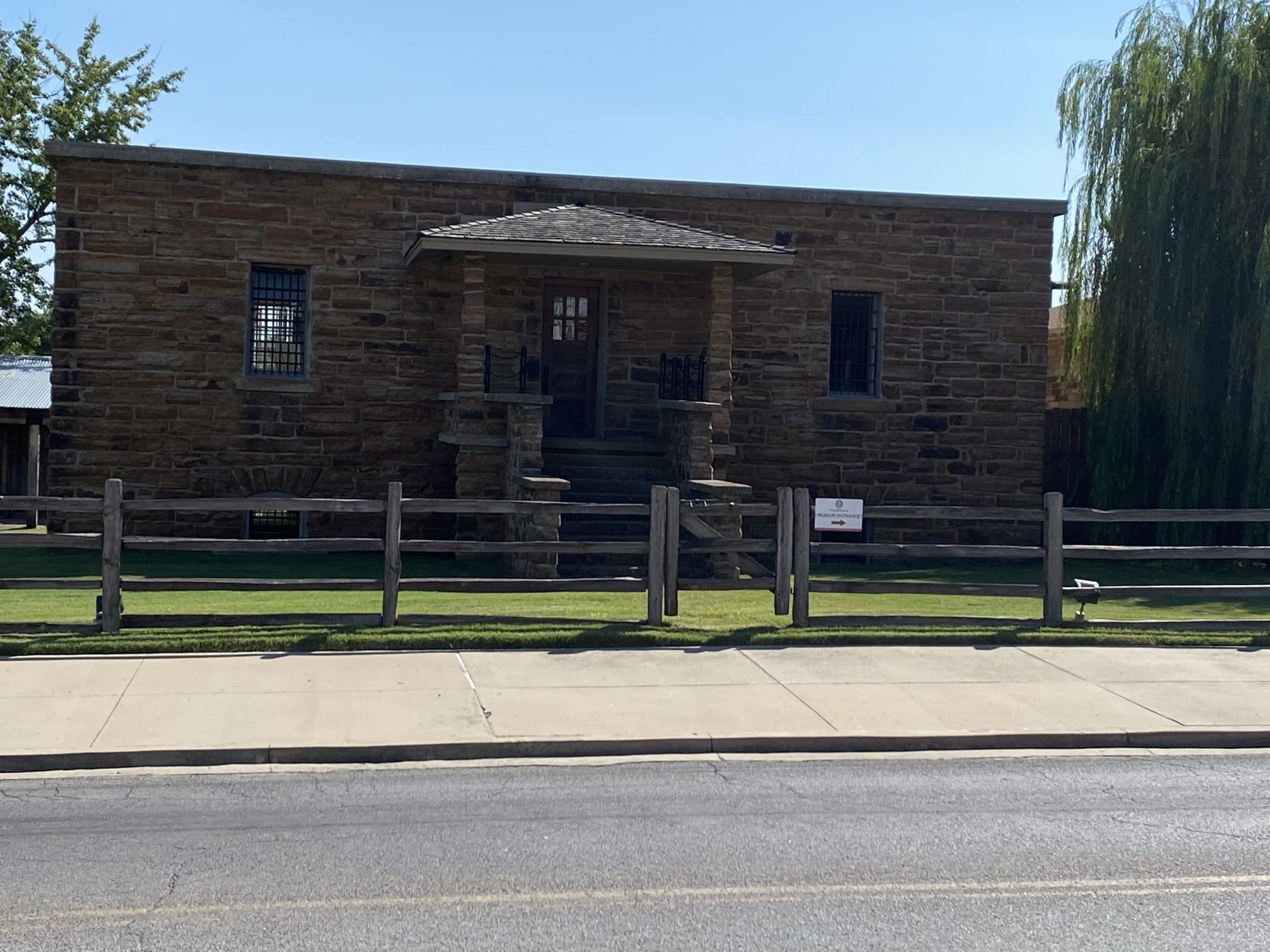
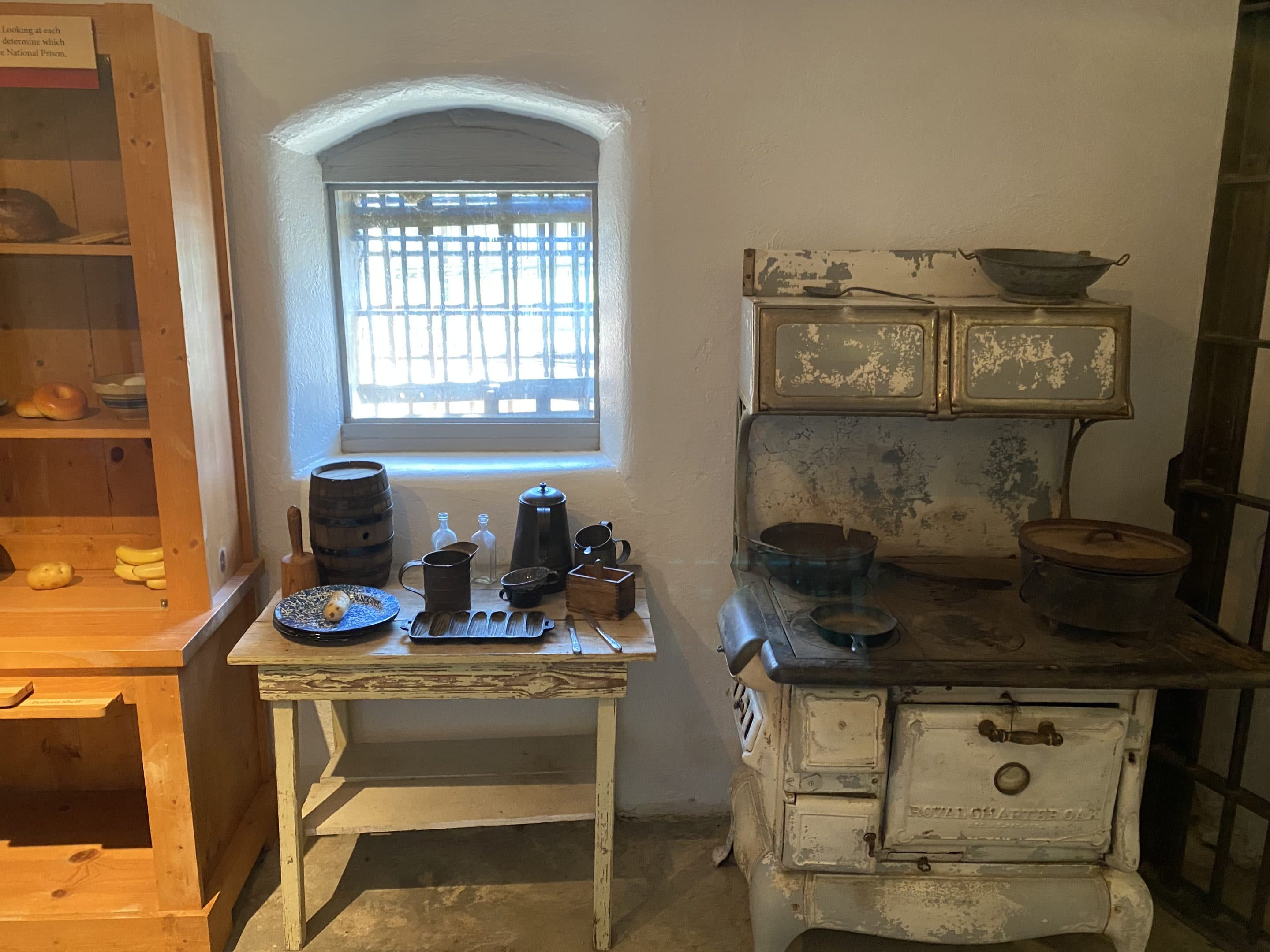
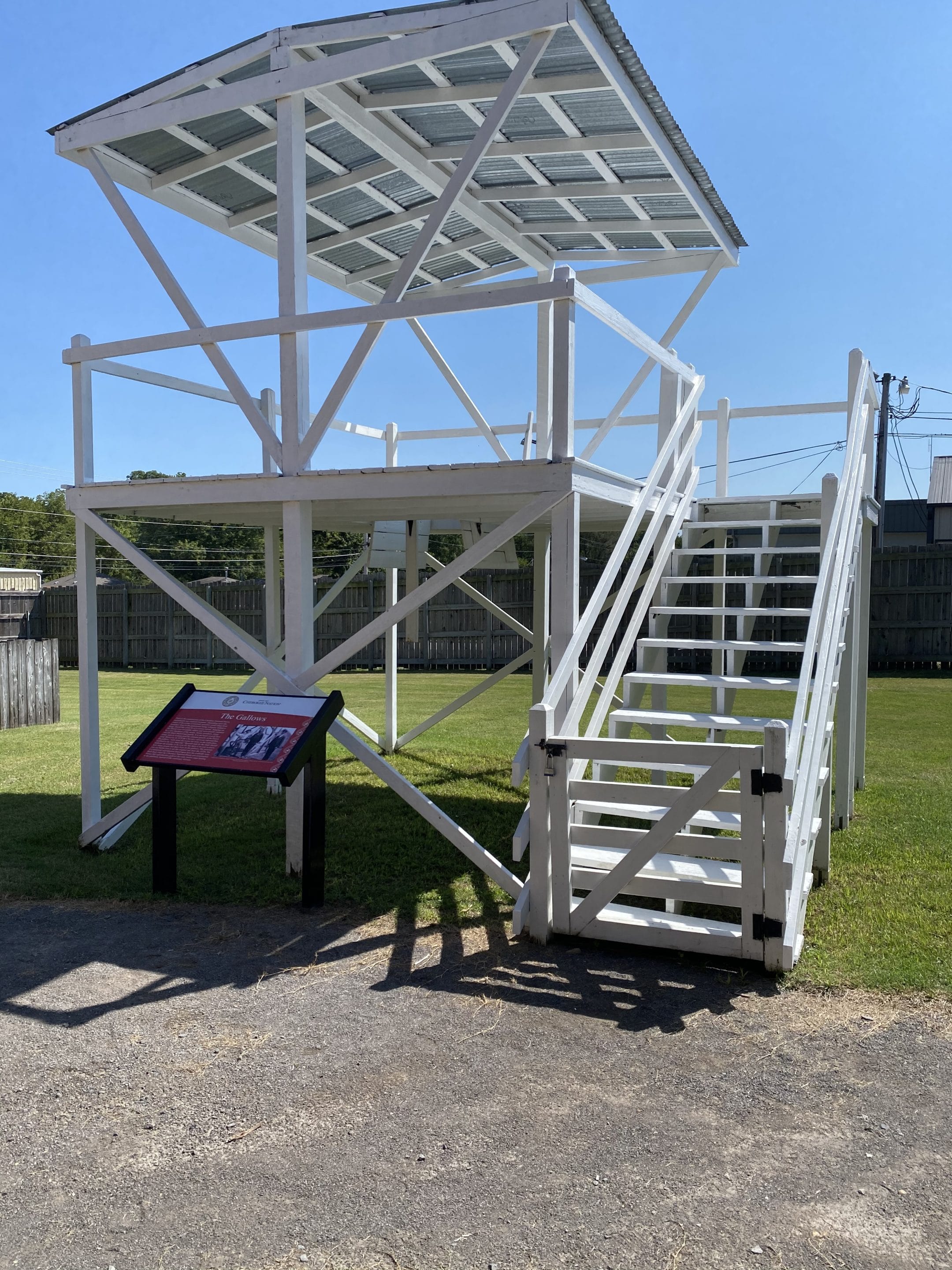


0 Comments